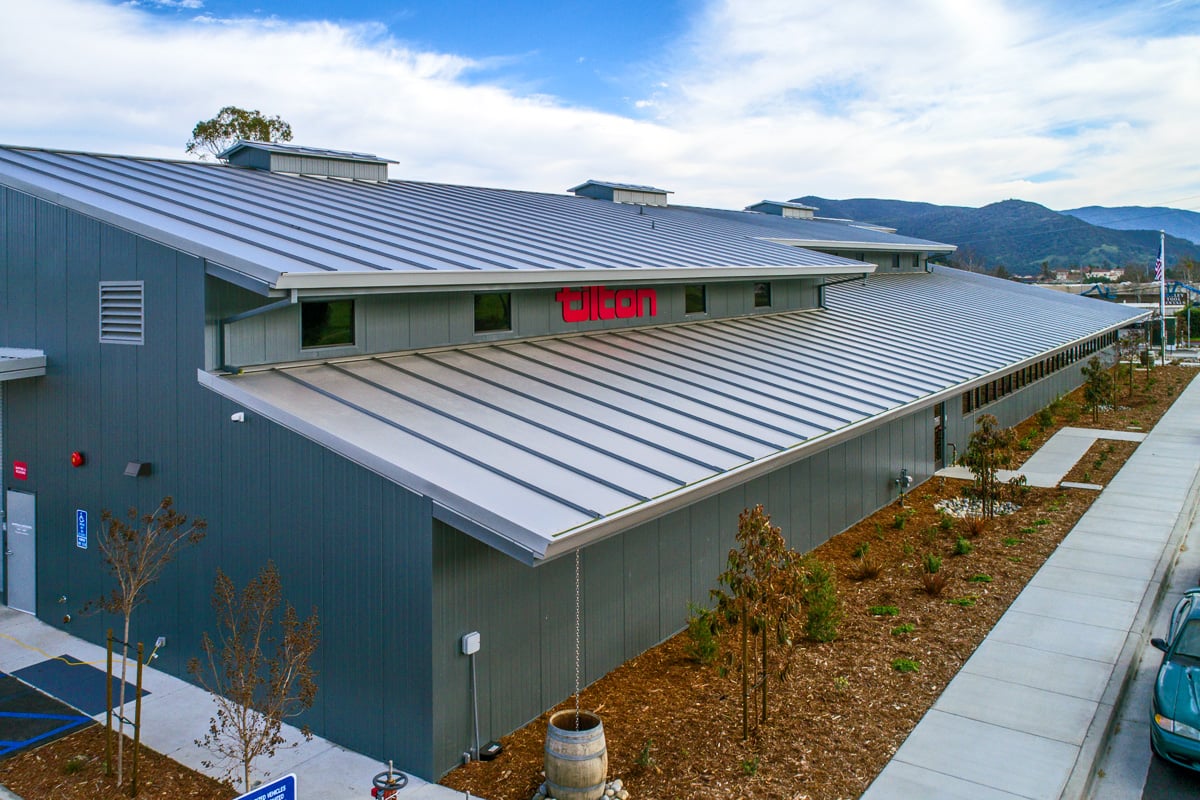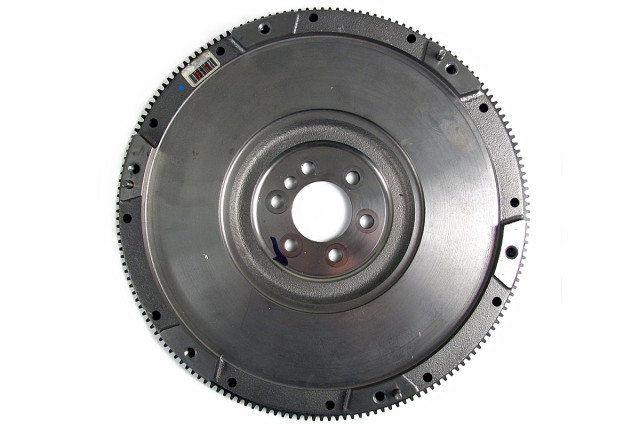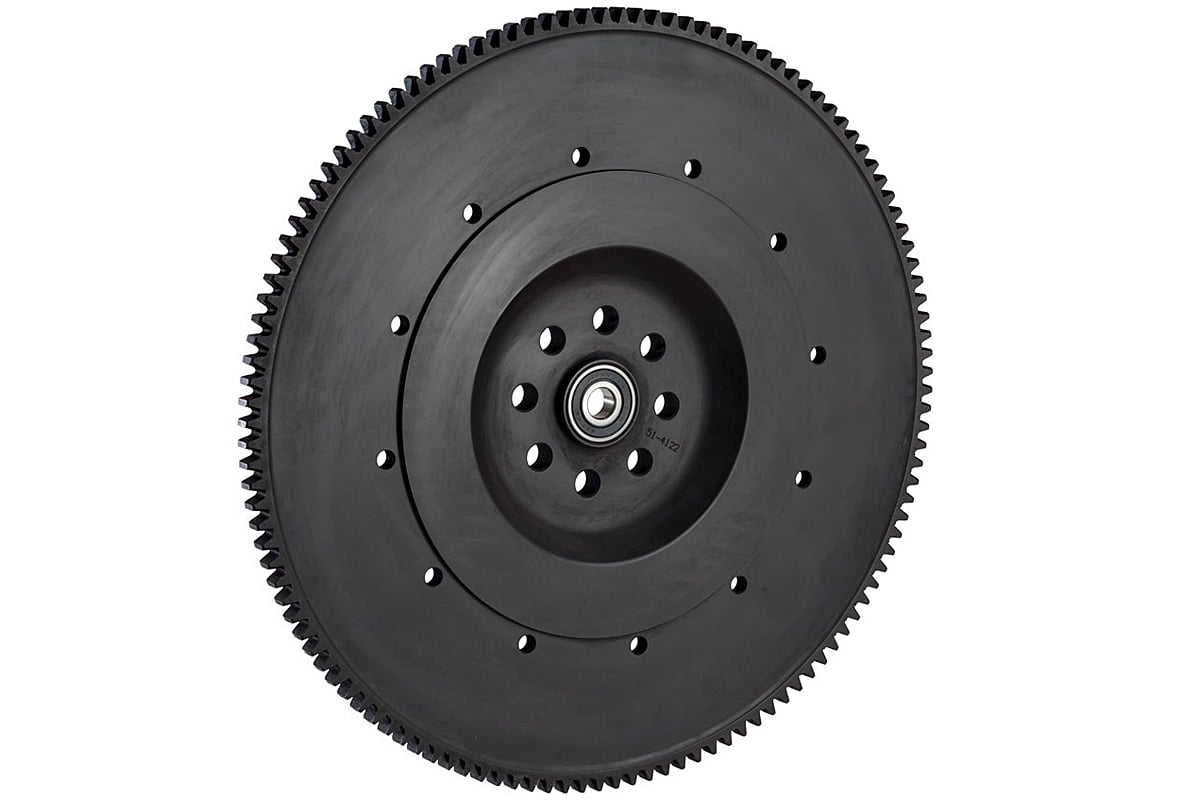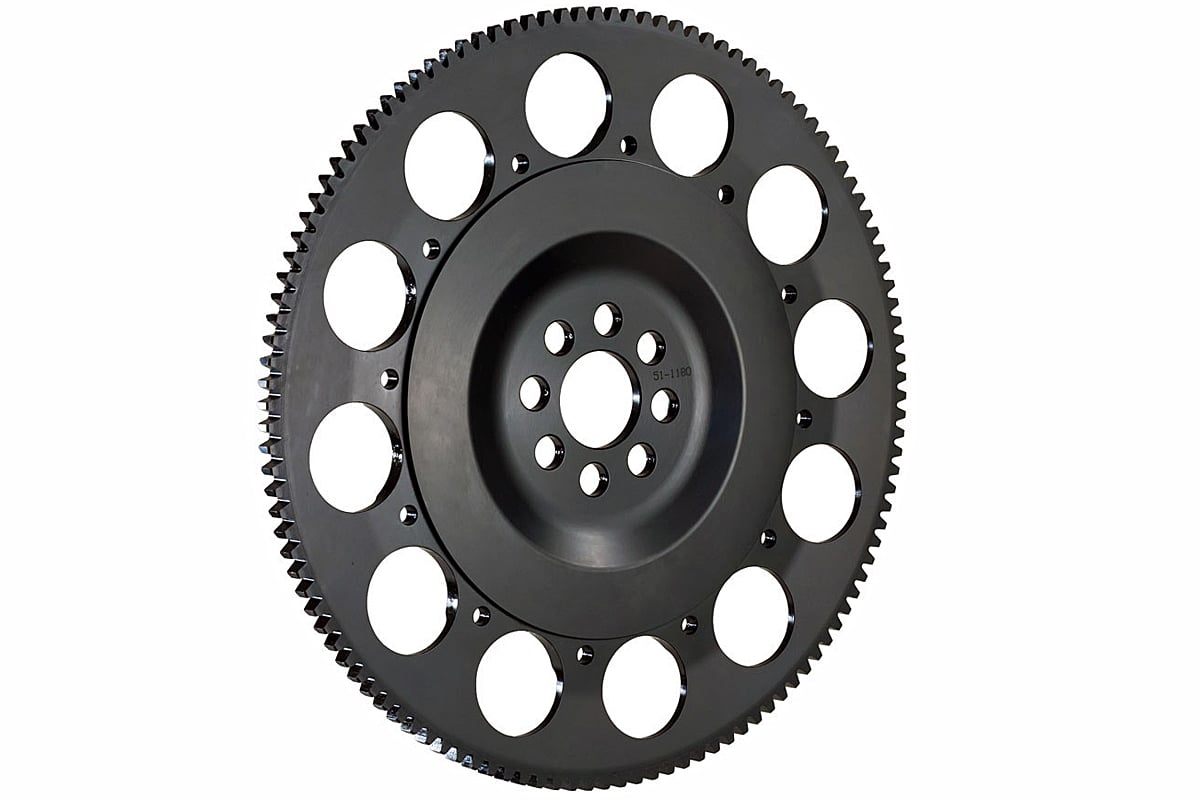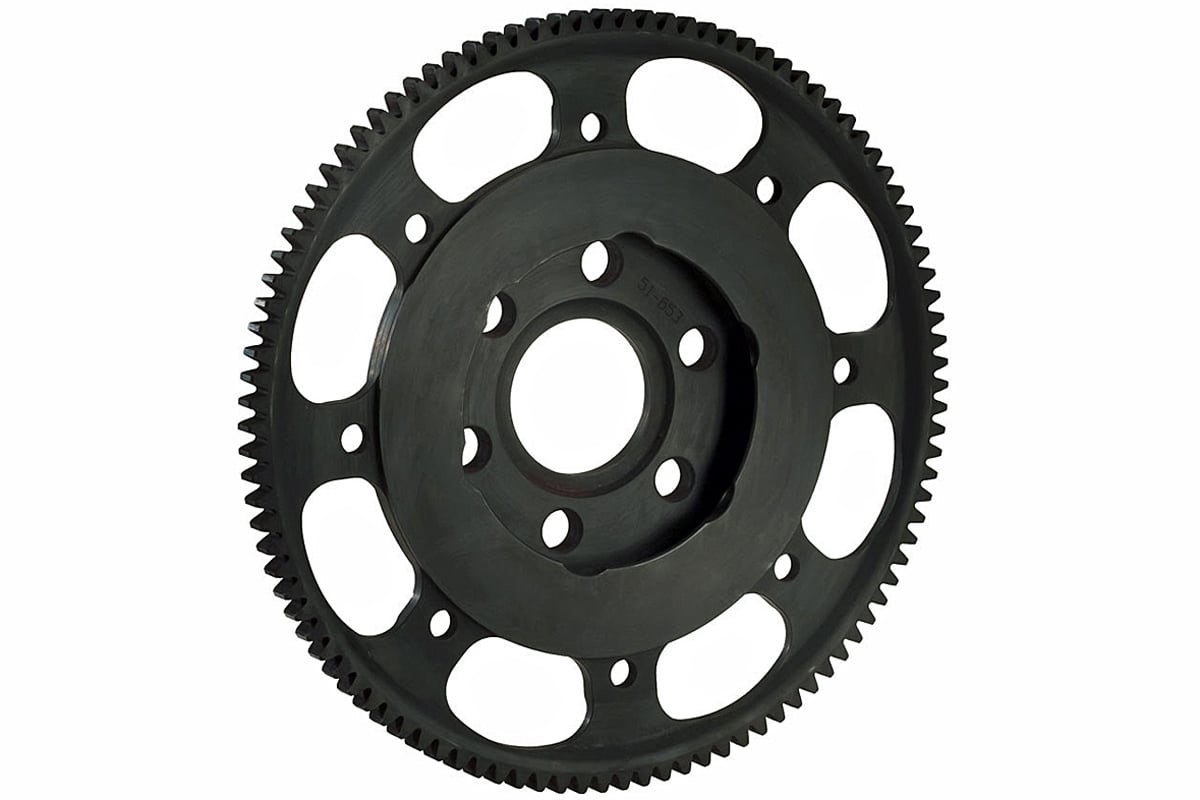Along the California coast, just east of Vandenberg Air Force Base and neighboring the Dutch-influenced town of Solvang, lies Tilton Engineering. Tilton is well known for producing some of the highest quality race-grade driveline components and for providing technical services to dedicated enthusiasts and professional race teams spanning across many forms of motorsports.
Tilton’s product offerings include clutch friction materials such as metallic, cerametallic and carbon/carbon for racing clutches; hydraulic release bearing conversions, multi-disc clutch packs, lightweight racing flywheels, pedal assemblies and master cylinders, the renowned Super Starter series, and the accessories that make them all work together.
Tilton Engineering recently moved into their newly constructed facility in Buellton, CA in January of 2017.
When it comes to developing a clutch kit for racing applications at Tilton, the company’s team of engineers know how important it is to take into account the total mass of the flywheel. The term most commonly associated with this measurement is the Moment of Inertia (MOI). We sat down with Jason Wahl, President and CEO of Tilton Engineering, to learn more about how Tilton approaches the research and developement side of clutch assembly and flywheel rotational mass. Wahl is a mechanical engineer by trade, so he was more than happy to fill us in.
Why Moment of Inertia Matters
If we go back to basic physics and look at Sir Isaac Newton’s second law for rotation, it states that an object’s angular acceleration is proportional to the net force (energy) and inversely proportional to the Moment of Inertia.
The Moment of Inertia, also commonly referred to as the Mass Moment of Inertia, is a rotational objects natural resistance to a change in speed or direction exerted by a force (energy), as a function of its mass and how that mass is distributed. The heavier and/or larger in diameter (volume) the object is, the more energy it will require to change its state of motion.
In our case, the object is our flywheel and the goal is to reduce the MOI of the flywheel by utilizing high quality lightweight materials and some precision machine work to reduce weight, and limiting its overall diameter (volume) when possible. This will in-turn reduce the amount of energy required to accelerate the flywheel.
From an engineering perspective, the flywheel in your manual transmission vehicle is an energy storage device. Steel flywheels, like those found in your average manual transmission vehicle, are generally heavy and have a relatively large diameter, requiring more energy to accelerate or decelerate the flywheel to the desired speed.
“The lower the MOI, the less energy will be required to accelerate or decelerate the flywheel,” states Wahl. “The less energy wasted in accelerating or decelerating the drivetrain, the more you will have available at the wheels. Lowering the MOI of the driveline allows the car to speed up and come to a stop faster.”
For most applications the flywheel is connected to the rear flange of the crankshaft, meaning that this energy is produced by the engine in the form of torque. When accelerating an engine, every lb-ft of torque that it takes to accelerate the flywheel assembly to the required speed is energy that is not transferred to the drive wheels to accelerate the car.
Tilton Engineering OE-style 124-tooth flywheel Subaru WRX STI (left); 120-tooth flywheel for Honda K20/24 (center); 102-tooth flywheel Ford V8 w/ 5.5-inch clutch. Notice the lightening holes used to reduce the flywheel's MOI by removing as much mass (volume) from the outer edge of the flywheel as possible.
Since the flywheel is an energy storage device, it’s important to remember that the only opportunity for it to rapidly release this stored up energy is when you apply the brakes — outside of the minimal drag and friction experienced at the flywheel naturally, of course. As you apply the brakes, that stored energy is transferred into the drivetrain in an attempt to maintain its current state of motion.
Determining The Moment Of Inertia
To determine the MOI of a clutch and flywheel assembly you have to find the weight and its location from the flywheel’s axis of rotation (where it bolts to the crankshaft flange). The MOI is most often denoted in lb-in².
“Moment of Inertia is a function of the object’s mass multiplied by the square of the radius; so physically reducing the diameter of the assembly is one of the biggest advantages we have found,” explains Wahl. “Since it isn’t always possible or practical to reduce the diameter of a flywheel, removing as much mass [volume] as possible from the largest diameter portions is important when a low inertia design is called for.”
“Although, for certain applications a very low MOI can be detrimental to the launch of the car — since the flywheel is storing less energy — and this can be an important aspect to consider for drag racing applications. But it does not really apply to other forms of motorsports like oval track or road racing, where a lighter clutch and flywheel assembly is always preferred. It all comes down to the specific application,” states Wahl.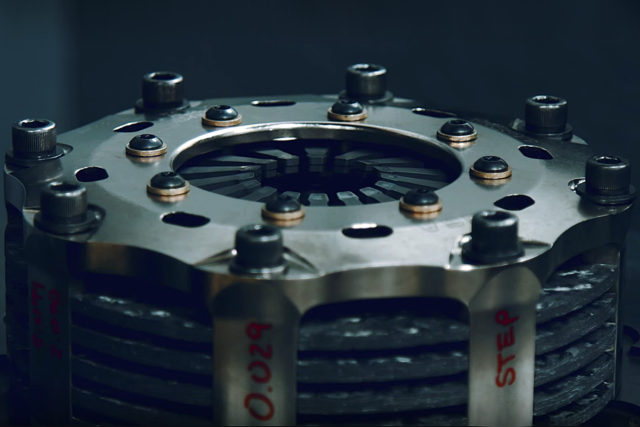
When comparing two different flywheels, you should make your decision based on which design has a lower MOI in combination with your clutch assembly — not necessarily the lowest overall weight. Because the flywheel and clutch with the lower MOI will be the one that absorbs the least amount of torque during acceleration.
“Think about it this way, if you increased the total weight of a flywheel by exactly double, without changing how the mass is distributed around its axis of rotation, it would double the MOI. If you instead doubled the weight’s distance from the axis of rotation as well, it would quadruple the MOI,” states Wahl. “Since the flywheel’s weight now spans twice the distance, its linear speed must be twice as fast to reach the same RPM as before. In order to do that at the same rate it will require twice the linear acceleration.”
How great of an effect the diameter of an object has is proven when you look at that the MOI of a 153-tooth Chevy flexplate and a 102-tooth Chevy flywheel. The weight between the two is almost identical while the diameter of the flexplate is much greater, greatly increasing the MOI.
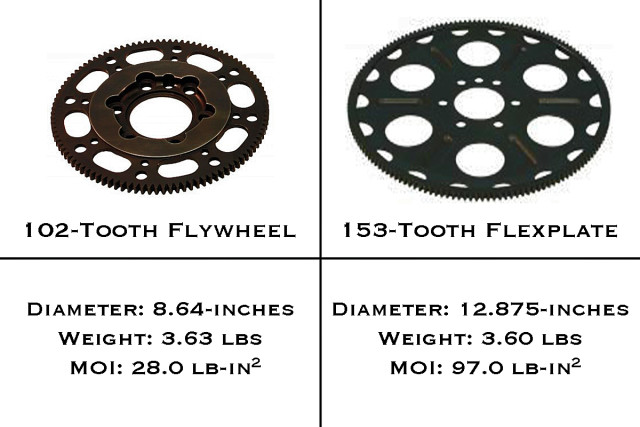
Notice the MOI difference between the flywheel and flexplate. While the weight of each is almost identical the diameter of the flexplate is nearly 50-percent larger, more than tripling the Flexplate’s MOI.
Another important factor to take into account is leverage. For example, a contestant on Wheel Of Fortune has to exert much more force to spin The Wheel than they would if it were the size of a bicycle wheel. So, now that the weight of our flywheel is twice the distance from the axis of rotation we will lose half of the leverage we had before, requiring twice as much torque to achieve the same linear acceleration — this would then quadruple the MOI of the flywheel. If we transferred the weight three times as far from the axis of rotation, the MOI would be multiplied by nine!
Additionally, it should also be noted that, similar to drag racing, if your racecar also doubles as your daily driver — or is frequently driven on the street in general — a clutch and flywheel assembly with a very low MOI may negatively affect drivability when accelerating slowly from a stop or when stuck in stop-and-go traffic. Remember, less mass means less energy will be required to change the flywheels state of motion. Which means less than perfect clutch engagement will more easily jar the flywheel to a stop — stalling the engine.
Research And Developement
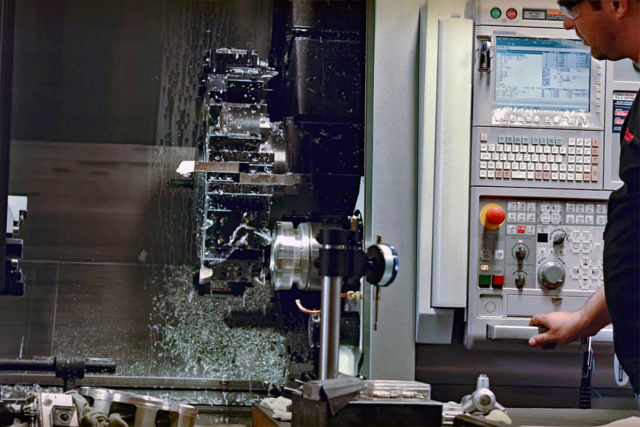
Tilton Engineering employs only the highest skilled machinists and engineers in the industry to guarantee the customer always receive exactly what they need.
“At Tilton, we have a simple test rig that can measure the inertia of an existing part, and we also utilize solid modeling CAD software to calculate the inertia of new parts we create.” explains Wahl. “In applications where higher inertia is desired, we can compare our designs [before physical parts are even made] to past works and predict success to some degree. But as you would expect, track testing and customer feedback is still necessary.”
“Let’s say that a World Challenge team contacts us, and they are using an exotic or brand new engine platform or maybe they don’t have an off-the-shelf gearbox and are running something custom. For a racecar, we always start with the relevant sanctioning body’s rule book,” states Wahl. “From there we are generally left with a good idea as to what we can and cannot use during development. We might be limited to a 7.25-inch or 5.5-inch clutch diameter; certain friction materials might be banned; if the starter position can be modified; or maybe they have a limit to how small of a ring gear you can run on the flywheel.”
“Once we finish going through the rulebook and have a good understanding of what we are allowed to use, we will start a discussion with the team regarding practicality and their budget. That way we both have a clear understanding of how far the team wants to take it, and from there we would move on to designing the flywheel and clutch assembly to suit the customer’s specific needs, and then on to real world testing and feedback,” concludes Wahl.
Conclusion
Understanding the laws of physics is a small but important part of the engineering that goes into the clutch and flywheel assemblies produced by Wahl’s team at Tilton Engineering — where his team is capable of producing a clutch and flywheel to suit the specific needs of virtually any application, from drag racing, road racing, circle track, and even off-road.
Be sure to head over to Tilton’s website to see what drivetrain products they offer for your car. If you can’t find what you’re looking for just reach out to Tilton by email or phone to start the process of having something custom made!





